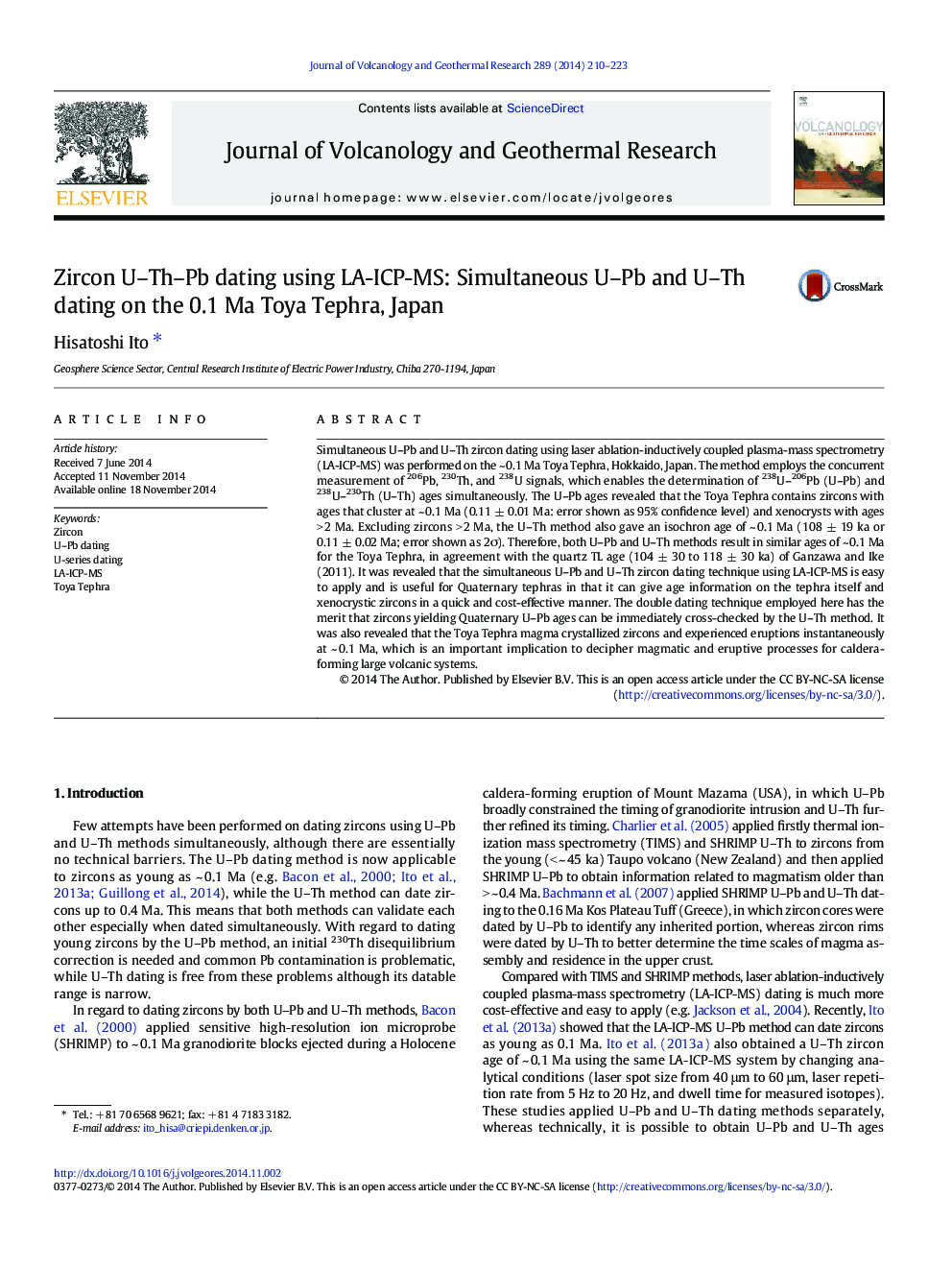| Article ID | Journal | Published Year | Pages | File Type |
|---|---|---|---|---|
| 6440050 | Journal of Volcanology and Geothermal Research | 2014 | 14 Pages |
Abstract
Simultaneous U-Pb and U-Th zircon dating using laser ablation-inductively coupled plasma-mass spectrometry (LA-ICP-MS) was performed on the ~ 0.1 Ma Toya Tephra, Hokkaido, Japan. The method employs the concurrent measurement of 206Pb, 230Th, and 238U signals, which enables the determination of 238U-206Pb (U-Pb) and 238U-230Th (U-Th) ages simultaneously. The U-Pb ages revealed that the Toya Tephra contains zircons with ages that cluster at ~ 0.1 Ma (0.11 ± 0.01 Ma: error shown as 95% confidence level) and xenocrysts with ages > 2 Ma. Excluding zircons > 2 Ma, the U-Th method also gave an isochron age of ~ 0.1 Ma (108 ± 19 ka or 0.11 ± 0.02 Ma; error shown as 2Ï). Therefore, both U-Pb and U-Th methods result in similar ages of ~ 0.1 Ma for the Toya Tephra, in agreement with the quartz TL age (104 ± 30 to 118 ± 30 ka) of Ganzawa and Ike (2011). It was revealed that the simultaneous U-Pb and U-Th zircon dating technique using LA-ICP-MS is easy to apply and is useful for Quaternary tephras in that it can give age information on the tephra itself and xenocrystic zircons in a quick and cost-effective manner. The double dating technique employed here has the merit that zircons yielding Quaternary U-Pb ages can be immediately cross-checked by the U-Th method. It was also revealed that the Toya Tephra magma crystallized zircons and experienced eruptions instantaneously at ~ 0.1 Ma, which is an important implication to decipher magmatic and eruptive processes for caldera-forming large volcanic systems.
Related Topics
Physical Sciences and Engineering
Earth and Planetary Sciences
Geochemistry and Petrology
Authors
Hisatoshi Ito,
